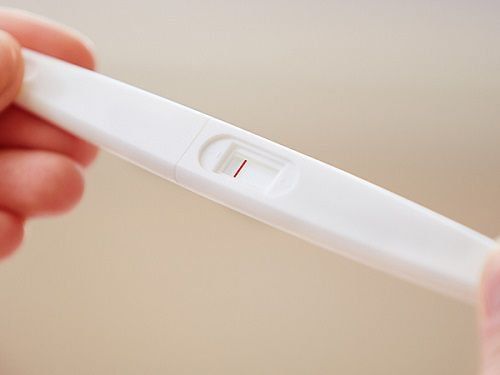This is an automatically translated article.
The decision to breastfeed only one or both breasts at each feeding is up to you and your baby. As long as your baby is getting enough breast milk and growing at a steady, healthy rate, it doesn't matter if he feeds on one or both breasts at each feeding. However, sometimes sucking on only one breast can cause problems like misaligned breasts.1. Reasons why babies only suck on one side
The following factors may be reasons for unilateral breastfeeding:Uncomfortable feeding position: The baby may prefer to suck on one breast if the baby is not comfortable holding the other breast. Ear infection or stuffy nose: This can make it uncomfortable for your baby to feed on one side. Lack of milk supply: Sometimes, a mother may have less milk in one breast. In addition, women who have undergone breast surgery, including removal of glandular tissue, may not have enough milk in that breast. There is a possibility that the flow of milk is slower or more frequent. This can also affect a child's liking for a particular aspect. Injury or cracked nipples: If this happens to one breast, mothers may prefer to breastfeed on the other breast. Recurrent mastitis or blocked milk ducts: This can cause pain or tenderness in the breast when feeding on the painful side and the mother may prefer to breastfeed on the other breast. Physical Disability: Some women may find it difficult to have a baby on one side due to physical problems. If your baby has a preference for lying on his side, it may be due to an intrauterine position, such as the breech position or the use of forceps during birth, which may make the baby reluctant to turn his or her head to one side.

Trẻ có thể thích bú một bên vú hơn nếu trẻ không được cầm thoải mái để ngậm vú bên kia
2. Is it okay to breastfeed on one side?
For the first few weeks after birth, it's best to feed your baby from both sides at each feeding. Bilateral breastfeeding helps stimulate breast milk production while you're establishing your milk supply.Bilateral breastfeeding can also prevent some common breastfeeding problems such as engorgement, blocked milk ducts and mastitis. After about 4 to 6 weeks, when your milk supply is well established and your baby is gaining weight well, then you can choose the breastfeeding method that works best for you and your baby.
As your child grows up, follow his or her wishes. Let your baby nurse on one side for as long as you like. Then, when your baby stops nursing, help burp, change diapers, and feed on the other side. If your baby wants to feed more, let him continue to suckle. If your baby only needs to suck on one breast to feel satisfied, that's okay.
Alternating breastfeeding is definitely beneficial for you when feeding your baby from both breasts. Besides helping to create a healthy supply of breast milk, alternating breasts during a feeding can help feed babies longer, provide more breast milk with each feeding for babies who need to gain weight and may even help keep your breasts a regular size.
Once you have established a steady, abundant milk supply and your baby is growing well, it may be more convenient for you to only breastfeed from one side at a time. If you have an abundant milk supply, feeding on only one side at a time can help reduce milk supply in the other breast. Breastfeeding only one breast at a time can also reduce regurgitation, fussiness, and colic symptoms in your baby.
Sometimes you may not have a choice. If you have a problem in one breast and the damaged breast takes time to heal, you can only feed your baby on one breast that makes breast milk or your baby only likes to breastfeed from one side. You may not need to switch breasts at each feed or at all.
Even if you can only breastfeed from one side, your body can still make an abundant supply of breast milk for your baby. As long as your baby is breastfeeding well and gaining weight, you don't need to worry about switching breasts at every feeding. But if you feel your baby isn't breastfeeding well or isn't getting enough breast milk, seek help. Whenever you have questions or concerns about breastfeeding, contact your doctor, lactation consultant or breastfeeding support group for information and support. help.

Trong vài tuần đầu sau khi sinh, tốt hơn hết bạn nên cho trẻ bú cả hai bên trong mỗi lần cho bú
3. Possible problems when breastfeeding too much on one side
Breastfeeding alone can cause certain problems in some women. Both breasts can experience different problems such as one not being used and the other being overfed. Unilateral breastfeeding can lead to:Cracked nipples: This is one of the major problems you can face if your baby is only nursing from one breast. A nipple can be sore and cracked from constant suckling. Painful Breasts: You may feel pain in both breasts. While one breast can cause pain from cracked nipples, the other can cause pain from engorgement. Erection of the breast: This happens to the breast to which the baby does not feed frequently. The breasts can become hard and sore from the excess milk, and the nipples can become flattened and stretched, resulting in milk leakage. Blocked milk ducts: Failure to remove milk from the breast with no or little breastfeeding can cause blocked milk ducts. You may also have a painful and red lump on your breast. Mastitis: This is an inflammation of the breast caused by engorgement (restricted milk flow). At first, mastitis may not have much effect, but if it persists, it can cause bacterial superinfection. Mastitis can also occur due to an infection of the cracks in the breast that you breastfeed frequently. Breast Abscess: This is painful swelling and pus formation on the breast. This condition occurs if mastitis is not properly cared for and treated. Some side effects of unilateral breastfeeding, such as lopsided (uneven) breasts, are not a serious concern. However, you may have to be careful to avoid sore or cracked nipples. The breast that is not fed regularly also needs to be taken care of to avoid engorgement and other complications. Go to a Medical facility if you notice any of the problems mentioned above.

Áp xe vú là tình trạng nguy hiểm mà bạn có thể gặp phải nếu bé chỉ bú một bên
4. How to encourage the baby to suck on both breasts?
It's always good to breastfeed from both breasts, unless you can't do it. If you are not experiencing severe pain, bleeding or cracking in one of your breasts, you can encourage your baby to breastfeed from both breasts by following these tips:Breastfeed on the side first. breast that your baby prefers less or when he's sleepy, but you shouldn't force him. Massage the breast that the baby prefers less; This can enhance blood supply. You can feed your baby on the favorite side first and then on the less preferred side. The baby can accept to continue suckling if there is not enough milk for the preferred breast. You can use a nipple shield if the reason your baby doesn't like one breast is the shape of the nipple. You can change the position and position of breastfeeding. You can change from a favorite breast to a breast that your baby is less likely to like without having to change his or her head position. It is helpful if the baby does not want to turn his or her head to a certain side because of the position in the uterus or the use of forceps or if the child has a torticollis. Gentle massaging of the jaw and neck area will help, and if that doesn't help, see an orthopedist who specializes in newborns. You may notice lopsided or uneven breasts if your baby feeds on only one breast. Even women who normally breastfeed with both breasts can experience uneven breasts after breastfeeding on only one breast. Unevenness can also occur if the rate of milk production in the two breasts is different.
Sagging breasts are normal in nursing mothers and are also more noticeable during the first few weeks after giving birth. Although some women may be concerned about the unevenness, in most cases others will not notice the unevenness.

Bạn có thể nhận thấy hai bên vú bị lệch hoặc không đồng đều nếu con bạn chỉ bú một bên vú
5. When to call the doctor?
You should contact your doctor if you notice any of the following signs:Pain in the nipple or breast Bleeding from the nipple Crack in the nipple Red, tender lump on the breast Low milk supply Baby urinating less Infants with poor growth are generally more susceptible to respiratory diseases, respiratory infections and gastrointestinal infections if they are introduced to solid foods early or if milk is not properly stored and prepared. To protect children's health, parents should do well to exclusively breastfeed their babies for the first 6 months (if possible) and vaccinate on schedule. As soon as a child shows symptoms such as anorexia, fatigue, and crying, the child needs to go to the hospital to be consulted by a specialist for monitoring and treatment. The pediatric department at Vinmec International General Hospital is the address for receiving and examining diseases that infants and young children are susceptible to: viral fever, bacterial fever, otitis media, pneumonia in children. With a system of facilities, modern medical equipment, sterile space, minimizing the impact as well as the risk of disease spread, Vinmec will bring satisfaction to customers. and is highly appreciated by industry experts with:
Gathering a team of leading pediatricians: including leading experts with high professional qualifications (professors, associate professors, doctors, Master's degree), experienced, worked at major hospitals such as Bach Mai, 108.. The doctors are all well-trained, professional, conscientious, knowledgeable about young psychology. In addition to domestic pediatric specialists, the Department of Pediatrics also has the participation of foreign experts (Japan, Singapore, Australia, USA) who are always pioneers in applying the latest and most effective treatment regimens. . Comprehensive services: In the field of Pediatrics, Vinmec provides a series of continuous medical examination and treatment services from Newborn to Pediatric and Vaccine,... according to international standards to help parents take care of their baby's health from birth to childhood. Advanced techniques: Vinmec has successfully deployed many specialized techniques to make the treatment of difficult diseases in pediatrics more effective: neurosurgery - skull, stem cell transplant blood in cancer treatment. Professional care: In addition to understanding children's psychology, Vinmec also pays special attention to the children's play space, helping them to play comfortably and get used to the hospital's environment, cooperate in treatment, improve the efficiency of medical treatment.
Please dial HOTLINE for more information or register for an appointment HERE. Download MyVinmec app to make appointments faster and to manage your bookings easily.
Reference source: babycenter.com, verywellfamily.com












